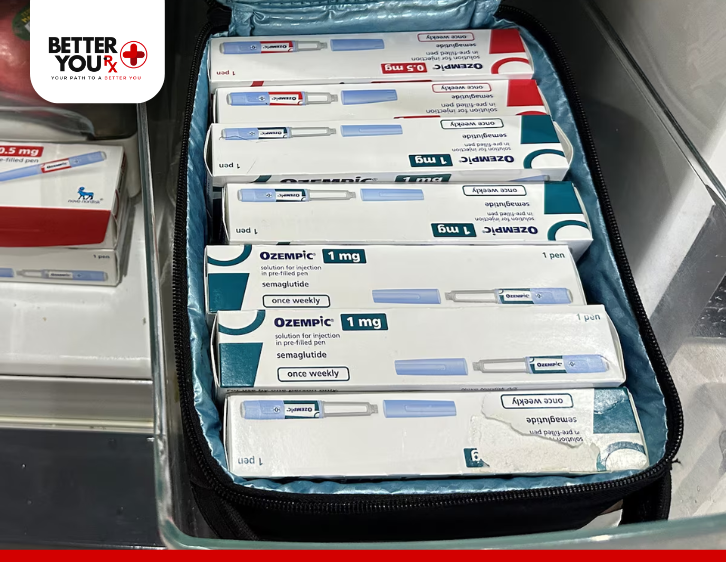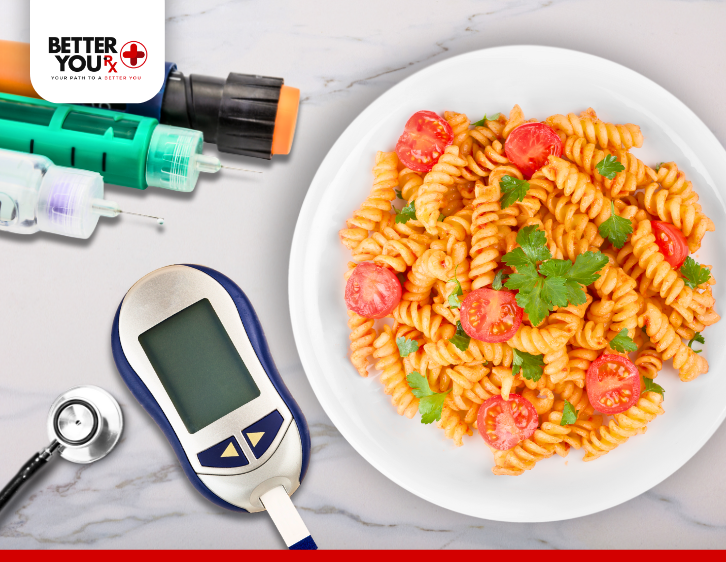Does Ozempic Need to Be Refrigerated?
One of the most common questions people have when starting Ozempic for type 2 diabetes is about proper storage—specifically, whether Ozempic needs to be refrigerated. This is an important consideration because improper storage can impact the medication’s effectiveness, which could affect your blood sugar management.
Why Refrigeration is Important for Ozempic

Before you use your Ozempic pen for the first time, it must be refrigerated. The manufacturer recommends storing unopened Ozempic pens at a temperature between 36°F (2°C) and 46°F (8°C) to ensure the medication remains stable and effective. Keeping the medication within this range helps protect the active ingredient, semaglutide, from degrading, which could occur if exposed to extreme temperatures.
Once you’ve used the pen for the first time, the storage rules become a bit more flexible.
- After your first use: You can continue to refrigerate your Ozempic pen between 36°F (2°C) and 46°F (8°C), or you can store it at room temperature, which is between 59°F (15°C) and 86°F (30°C).
- Maximum storage time: Whether refrigerated or stored at room temperature, the Ozempic pen is good for 56 days after its first use. After this period, the medication should be discarded even if it has not been fully used.
Can You Freeze Ozempic?
Freezing Ozempic is not recommended. If the pen has been frozen, you should discard it, even if it looks normal. Freezing can destroy the semaglutide molecule, making the medication ineffective.
Why Proper Storage is Key
The semaglutide in Ozempic is a peptide-based drug, which means it is made up of amino acids. This structure can be sensitive to changes in temperature, and storing the pen outside of the recommended temperature range can cause the medication to degrade. If this happens, it may not control your blood sugar as effectively.
What If You Forget to Refrigerate Ozempic?
If you accidentally leave your Ozempic pen out of the fridge, don’t panic. As long as the pen is kept at room temperature and hasn’t been exposed to temperatures higher than 86°F (30°C), it should still be usable. However, if the pen has been exposed to temperatures above this limit, it’s best to discard the pen and use a new one.
Traveling With Ozempic

If you’re traveling, it’s essential to consider how you’ll store your medication, especially if you’re going to a hot or cold destination. Consider using a portable cooler to store your Ozempic during travel to maintain the correct temperature. But remember, don’t freeze it, and avoid placing it directly on ice packs.
For road trips, keeping the pen in a cooler bag with a cold pack (but not directly in contact with ice) is a great way to ensure the medication stays within the recommended range. If you’re flying, TSA allows passengers to carry medications, including injectables, in their carry-on luggage, so you can keep it cool and within reach.
Storing Ozempic in Hot Climates
If you live in particularly hot climates, like Phoenix, Arizona, or Lake Havasu, keeping the medication within the recommended temperature range can be a challenge, especially during the summer when temperatures can exceed 100°F (38°C). To avoid compromising the medication, make sure to store it in a cool, air-conditioned environment.
What Happens If You Use Expired or Improperly Stored Ozempic?
Using expired or improperly stored Ozempic can result in a reduction in the medication’s effectiveness. Since semaglutide helps control blood sugar levels, using a pen that has lost its potency can lead to suboptimal diabetes management, increasing the risk of hyperglycemia (high blood sugar).
Always check the expiration date and make sure to discard any pens that have been stored improperly or are past their 56-day usage window after the first injection.
Why is Ozempic So Popular?
Ozempic has gained popularity not just for managing type 2 diabetes but also for its role in weight loss. Many people with type 2 diabetes struggle with weight management, and Ozempic helps by reducing appetite and promoting feelings of fullness, leading to fewer calories consumed. This dual action makes it a valuable medication for those managing both diabetes and obesity.
Studies have shown that Ozempic can also help reduce the risk of cardiovascular events, such as heart attacks and strokes, in people with type 2 diabetes who also have cardiovascular disease.
How Does Ozempic Work?
Ozempic’s active ingredient, semaglutide, is a GLP-1 receptor agonist. It works by stimulating insulin release in response to elevated blood glucose levels. It also slows down gastric emptying, which means food stays in your stomach longer, leading to increased feelings of satiety. This not only helps lower blood sugar but also promotes weight loss.
Is Ozempic Suitable for Everyone?
While Ozempic is highly effective, it isn’t for everyone. People with a history of certain thyroid cancers or who have experienced pancreatitis should avoid the drug. It’s essential to consult with your healthcare provider to determine if Ozempic is the right treatment for your condition.
Final Thoughts: Does Ozempic Need to Be Refrigerated?

In conclusion, Ozempic does require refrigeration before its first use. After the initial injection, you can either store it in the refrigerator or keep it at room temperature, as long as the temperature remains between 59°F and 86°F. It’s essential to use the medication within 56 days and avoid exposing it to temperatures above 86°F, which can compromise its effectiveness. Proper storage is key to ensuring that Ozempic maintains its potency, helping you effectively manage your blood sugar levels.
By being aware of these storage guidelines and consistently following them, you can maximize the effectiveness of your diabetes treatment.
Did you know that you can purchase Ozempic from Canada at prices up to 40% lower than those in U.S. pharmacies? Better You RX offers a safe and affordable option to obtain your medication. Check Ozempic availability now and start saving today!
By taking these proactive steps in managing your medication and lifestyle, you’ll be well-equipped to handle your diabetes and overall health more effectively.














